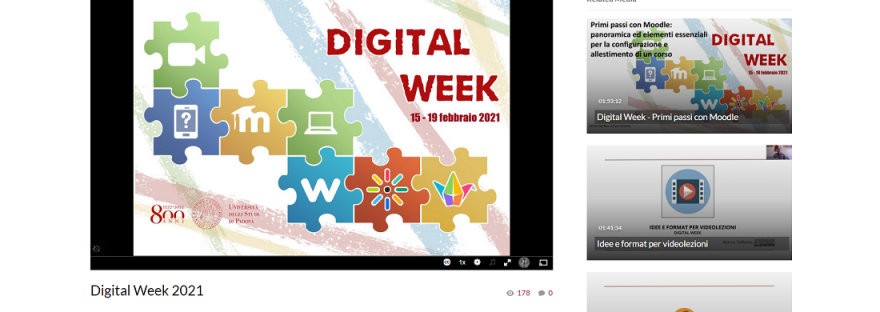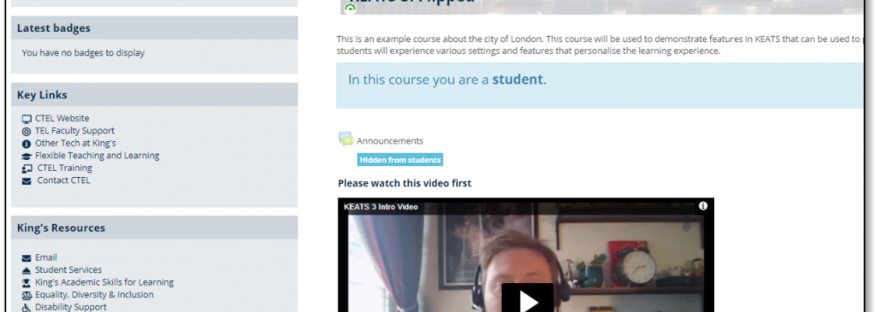The rapid pivot to a re mote education format during the 2020 pandemic, necessitated an agile approach to teaching and assessment. With bioscience class sizes ranging from ~25-720 students, ascertaining how well students understood taught concepts, was an essential yet challenging task. Despite the diversity of class sizes and subject areas, some tried and tested methods were found to be more effective and user friendly, for both our students and staff. Continue reading “Gauging student engagement and understanding remotely – some tried and tested methods”
Author: Georgios Aretakis
Part 2: Teaching in the HyFlex Classroom: Benefits and Challenges
This article has been divided in two parts. Part 1 explains what HyFlex is and which are the key points to consider before using it. Part 2 presents a wide range of teaching activities that can be used in a HyFlex classroom. Continue reading “Part 2: Teaching in the HyFlex Classroom: Benefits and Challenges”
Part 1: Teaching in the HyFlex Classroom: Benefits and Challenges
This article has been divided in two parts. Part 1 explains what HyFlex is and which are the key points to consider before using it. Part 2 presents a wide range of teaching activities that can be used in a HyFlex classroom.
Continue reading “Part 1: Teaching in the HyFlex Classroom: Benefits and Challenges”
Part 2: Kaltura at the University of Padua
This article has been divided in two parts. Part 1 discusses the background and training required for implementing Kaltura, as well as the reasons and methods for using it. Part 2 discusses the benefits of having a university video platform and strategies for student engagement. Continue reading “Part 2: Kaltura at the University of Padua”
Part 1: Kaltura at the University of Padua
This article has been divided in two parts. Part 1 discusses the background and training required for implementing Kaltura, as well as the reasons and methods for using it. Part 2 discusses the benefits of having a university video platform and strategies for student engagement. Continue reading “Part 1: Kaltura at the University of Padua”
Using Automation to Facilitate Flipped Learning
With the move to fully online teaching, it soon became apparent the most advanced KEATS (Moodle) training session, KEATS 3: Personalising the Learning Experience, was not appropriate for synchronous delivery. The session was re-designed as a completely flipped session, but attendees would often miss the pre-work instructions. The use of Microsoft Power Automate was explored to automate instructional emails, but the uses of the tool were further reaching than initially considered. Continue reading “Using Automation to Facilitate Flipped Learning”
ReFlexions on HyFlex
In 2020 we used HyFlex technology in our Research Skills in Pharmacology workshops to recreate the interactivity of class discussions. It allowed students in the classroom to interact with students thousands of miles away, but couldn’t fully recapture the dynamics of small group discussions with everyone in the same place. Continue reading “ReFlexions on HyFlex”
Tech Test Thursdays for Digital Capabilities
When the Covid-19 pandemic put us fully online, colleagues in King’s Academy needed to expand our repertoire with a range of evolving technologies. Since we lead educational development programmes and sessions, we strive to demonstrate intrepid, successful designs which make best use of our learning environments. In the foreseeable future those environments would be digital. This post gives a rationale for carving out regular time to test things out together, followed by details about how we set this up to be low-maintenance. Continue reading “Tech Test Thursdays for Digital Capabilities”
Using student media assignments
In her chapter in the recently published book ‘Languages at work, competent multilinguals and the pedagogical challenges of COVID-19’, Cecilia Goria describes the positive response of staff to the enforced move to teaching online due to the pandemic. This phase was described as Emergency Remote Teaching (ERT) – the quick unplanned response to the lockdown. Hodges et al. (2020) describe the speed with which this move to online instruction happened is ‘unprecedented’ and ‘staggering’. Continue reading “Using student media assignments”






